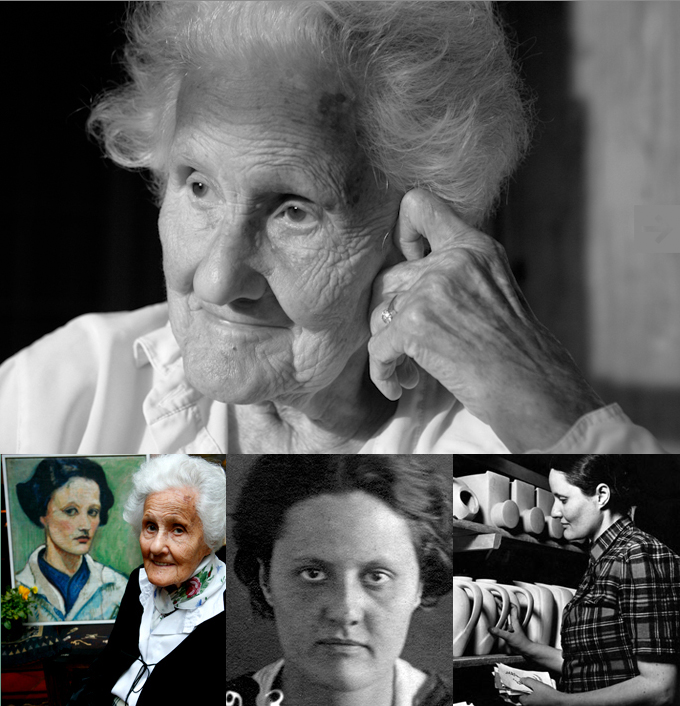Eva Zeisel was 105 years old when she died on December 30, 2011. She was born in Budapest, Hungary, in 1906 and entered the Hungarian Royal Academy of Fine Arts as a painter in 1923, but soon decided that she wanted to become a “maker of useful things.” She apprenticed herself to a pottery master in the medieval guild system, working up the hierarchy from apprentice to learned worker to journeyman and, at last, master. The guild was called “Roof-Coverers, Rail-Diggers, Oven Setters, Chimney Sweeps, and Potters,” with her apprenticeship covering every aspect of making pottery by hand, from preparing clay to making and setting ovens to fire the pots. 
Top: Eva Zeisel in 2009. Photo: Talisman Photo
If you want an impression of Eva’s personality, you can find a delightful TED Talk from 2001 in which she tells some stories of her life and travels, living in Germany, Austria, the Soviet Union, and the United States. At the age of twenty-nine, she was named artistic director of the Russian China and Glass industry, but seven years later she was suddenly arrested, falsely accused of participating in an assassination plot against Joseph Stalin. The punishment for this was sixteen months in prison, twelve of them in solitary confinement in a tiny cell that she dubbed “a cupboard,” where she practiced standing on her head, saying, “This was rather easy in a cupboard because there is not too much room to fall.”
The design that best illustrates her playfulness is her Town and Country series from 1946, whose salt and pepper shakers she described as portraits of herself and her daughter and gourds fondly embracing each other.

Town and Country series, introduced 1946, manufactured by Red Wing Pottery, Minnesota.
She called herself a “maker of things” because she created designs that were “more beautiful, more elegant, and more comfortable” than the output of a craftsman, but rejected the label of industrial design as associated with novelty, innovation, and commerce. She chose instead to focus on a playful search for beauty, designing and producing lovely things continually over a career that spanned four score years. As evidence of her amazing consistency, look at the two examples below, one from 1946 and the other from 2003. What a legacy! How appropriate that she received the National Design Award for Lifetime Achievement in 2005.

Museum series, introduced 1946.

Teapot, lid, cup, and saucer, 2003, manufactured by Lomonosov Porcelain Factory, Russia
Despite her passing, Eva Zeisel’s impact on modern design continues to be strong and current. Cooper-Hewitt is fortunate to have a broad range of Eva’s ceramic designs, starting with her work for German earthenware producers of the late 1920s, porcelain tableware of 1937 and 2003 from both the Soviet and post-Soviet-era Lomonosov factory, as well as her Museum Service of 1942 for the Museum of Modern Art and Town and Country pattern for Red Wing Pottery. Not unlike Cooper-Hewitt’s approach—seeing how historic forms can inform the present—Eva Zeisel said her Lomonosov work was inspired by pre-revolutionary designs in the factory’s collection. Examples of her Prestige glassware of about 1954 for the Federal Glass Co. and a number of design drawings for tableware further show the extent of her creativity and give an idea of how she approached the design process. Browse Zeisel's objects in Cooper-Hewitt's collection.